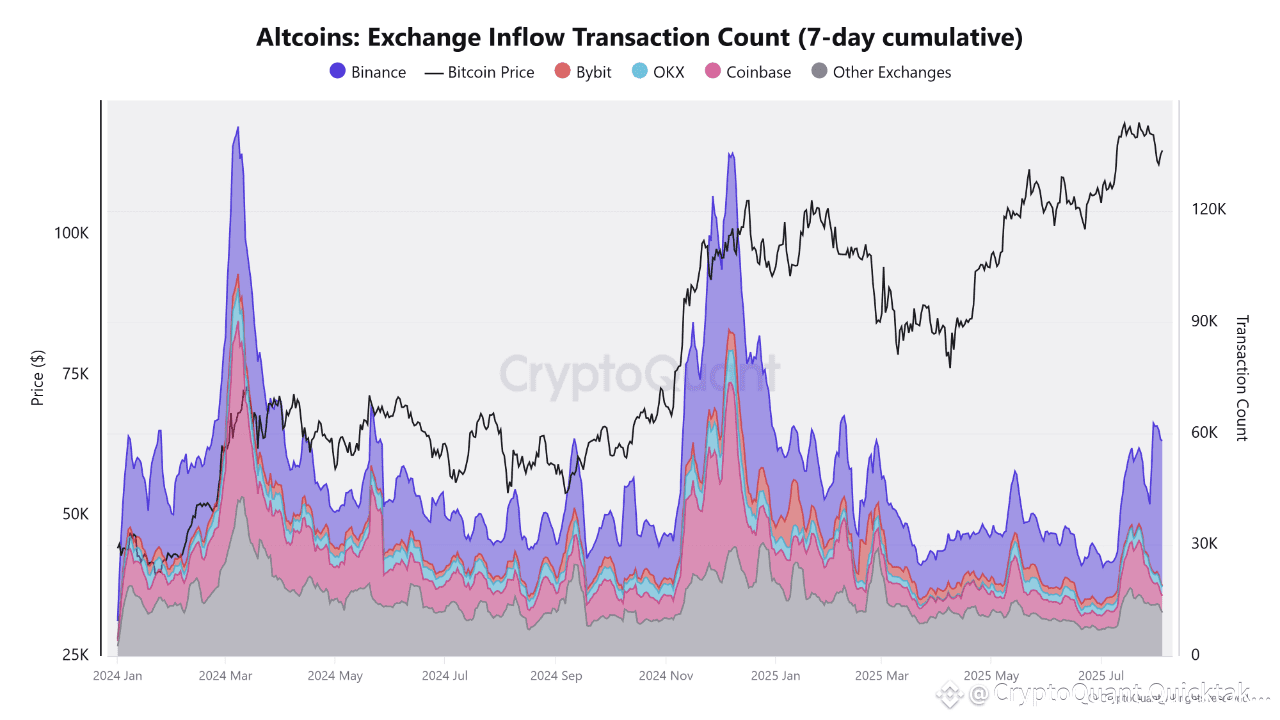On the other hand, monitoring inflows on the Binance platform is particularly important for several reasons:
1. Dominant Global Market Share
Binance is not only the largest exchange by trading volume, but also the most widely used platform by both retail and institutional investors in the altcoin market.
Any shift in user behavior on Binance tends to reflect broader market sentiment.
2. Diverse User Base
Binance hosts a wide mix of day traders, speculators, whales, and institutional players.
As such, when deposit transactions increase significantly on Binance, it’s not a signal from one specific segment—but rather from a broad spectrum of market participants, making it a highly relevant indicator.
3. Strong Correlation Between Binance Inflows and Market Price
By comparing exchange inflow trends with price action, we observe that:
Spikes in Binance inflows (represented by the purple area) frequently precede downward price movements or market corrections.
This is because asset deposits to exchanges generally come before selling, meaning that a surge in inflows often signals that many traders are preparing to sell or execute trades.
When deposit activity on Binance rises, the available supply in the market increases. The more coins that are ready for sale, the greater the selling pressure which can lead to price declines.
These inflows may reflect:
- Transfers from cold or decentralized wallets to centralized exchanges, signaling a transition from holding to selling.
- Strategic repositioning by users after long holding periods, often in anticipation of a major market move.
- Short-term speculative behavior, as some users may utilize Binance specifically for quick trades especially during times of panic or high volatility.

Written by Arab Chain

